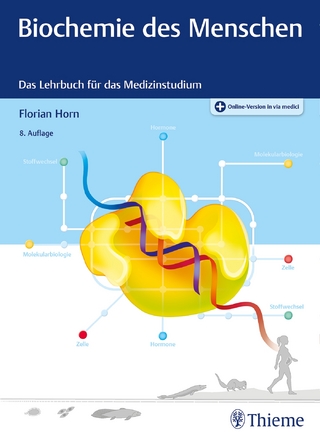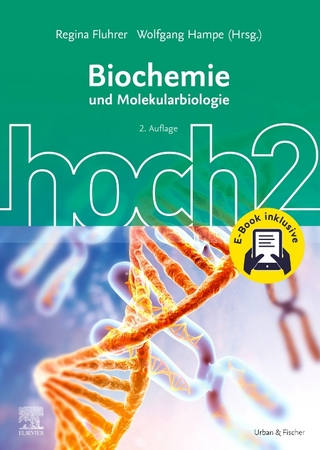
Advances in Vasopressin and Oxytocin - From Genes to Behaviour to Disease
Elsevier Science Ltd (Verlag)
978-0-444-53201-5 (ISBN)
Vasopressin and oxytocin are the key hormones of the hypothalamo-neurohypophysial system, and are well-known to be critically involved in antidiuresis, labor, and milk ejection. This book highlights the latest research on vasopressin and oxytocin, covering multiple biological aspects. The capacity of both hormones to regulate various aspects of social behaviours including pair-bonding, aggression, maternal love, and sexual behaviour, is a main focus, as are their interactions with a variety of other neuromodulators and transmitters. Moreover, the book illustrates the recent development of vasopressin and oxytocin agonists/antagonists as potential drugs to treat not only disturbances of body fluid homeostasis, but also mental disorders, including social phobia, autism, anxiety, and depression. The promising combination of basic and clinical research, comprising physiology, neuroendocrinology, behavioral biology, pharmacology, imaging and molecular genetics makes this book an essential addition to both experts and scientists new to the field alike.
I. VASOPRESSIN AND OXYTOCIN IN EVOLUTION, SEXUAL DICHOTOMY AND STRESS
Nonapeptides and the evolutionary patterning of sociality.
Sex differences in vasopressin and oxytocin innervation of the brain.
The parvocellular vasopressinergic system and responsiveness of the hypothalamic pituitary adrenal axis during chronic stress.
II. GENETICS MEETS BEHAVIOR
Experimental approaches for the study of oxytocin and vasopressin gene expression in the central nervous system.
Oxytocin knockout mice: a model for studying stress-related and ingestive behaviors.
The role of the vasopressin 1b receptor in aggression and other social behaviors.
Behavioral studies using temporal and spatial inactivation of the oxytocin receptor.
New aspects of oxytocin receptor function revealed by knockout mice: sociosexual behaviour and control of energy balance.
III. REGULATION OF VASOPRESSIN AND OXYTOCIN RELEASE
Regulation of vasopressin release by co-released neurotransmitters: Mechanisms of purinergic and adrenergic synergism.
Neuron-glia interactions in the rat supraoptic nucleus.
Dynamic synapses in the hypothalamic-neurohypophyseal system.
Endogenous modulators of synaptic transmission: cannabinoid regulation in the supraoptic nucleus.
Oxytocin and appetite.
IV. NONAPEPTIDE RECEPTORS: REGULATION AND SIGNALING
Neural mechanisms underlying the milk ejection burst and reflex.
Oxytocin receptor signalling.
Neurosteroids are excitatory in supraoptic neurons but inhibitory in the peripheral nervous system: it’s all about oxytocin and progesterone receptors.
Oxytocin receptors: ligand binding, signaling and cholesterol dependence.
V. NEURONAL ACTIONS OF NONAPEPTIDES
Opposite effects of oxytocin and vasopressin on the emotional expression of the fear response.
Multi-factorial somato-dendritic regulation of phasic spike discharge in vasopressin neurons.
Neurophysiology of supraoptic neurons in C57/BL mice studied in three acute in-vitro preparations.
Effects of oxytocin on GABA signalling in the fetal brain during delivery.
VI. REGULATION OF SOCIAL BEHAVIORS
Central vasopressin and oxytocin release: regulation of complex social behaviours.
Interactions between dopamine and oxytocin in the control of sexual behaviour.
Steroidal/neuropeptide interactions in hypothalamus and amygdala related to social anxiety.
Functional magnetic resonance imaging and the neurobiology of vasopressin and oxytocin.
Evolution of the arginine vasopressin 1 a receptor and implications for mammalian social behaviour.
Oxytocin, vasopressin and sociality.
Neuropeptides and social behaviour: effects of oxytocin and vasopressin in humans.
VII. OXYTOCIN AND VASOPRESSIN: INVOLVEMENT IN STRESS MANAGEMENT
Chronic stress plasticity in the hypothalamic paraventricular nucleus.
Keeping oxytocin neurons under control during stress in pregnancy.
Rapid synapse-specific regulation of hypothalamic magnocellular neurons by glycocorticoids.
Vasopressin in the septum: not important versus causally involved in learning and memory. Two faces of the same coin?
Role of the endocannabinoid system in regulation of the hypothalamic-pituitary-adrenocortical axis.
VIII. PSYCHOPATHOLOGY: CRITICAL INVOLVEMENT OF THE VASOPRESSIN AND OXYTOCIN SYSTEMS
Molecular genetic studies of the arginine vasopressin 1a receptor (AVPR1a) (and the oxytocin receptor (OXTR) in human behavior: from autism to altruism with some notes in between.
Oxytocin and experimental therapeutics in autism spectrum disorders.
Impact of prosocial neuropeptides on human brain function.
IX. VASOPRESSIN AND OXYTOCIN AGONISTS AND ANTAGONISTS: FROM PHARMACOLOGY TO CLINICAL UTILITY
Peptide and nonpeptide agonists and antagonists for the vasopressin and oxytocin V1a, V1b, V2 and OT receptors: research tools and potential therapeutic agents.
Affinity and efficacy of selective agonists and antagonists for vasopressin and oxytocin receptors: an “easy guide to receptor pharmacology.
Prevention of hypoxic brain oedema by the administration of vasopressin receptor antagonist OPC-31260.
Characterization of Org 52186, a novel and selective V1B receptor antagonist.
X. PHYSIOLOGY AND PATHOPHYSIOLOGY OF RENAL ACTIONS OF VASOPRESSIN
Molecular mechanisms of clinical concentrating and diluting disorders.
Actin-binding channels.
Opposite potentiality of hypothalamic coexpressed neuropeptides, apelin and vasopressin, in maintaining body fluid homeostasis.
Recent discoveries in vasopressin-regulated aquaporin 2 trafficking.
Pathophysiological role of aquaporin-2 in impaired water excretion.
Potential utility of aquaporin modulators for therapy of brain disorders.
| Erscheint lt. Verlag | 25.7.2008 |
|---|---|
| Reihe/Serie | Progress in Brain Research |
| Verlagsort | Oxford |
| Sprache | englisch |
| Maße | 192 x 262 mm |
| Gewicht | 1690 g |
| Themenwelt | Studium ► 1. Studienabschnitt (Vorklinik) ► Biochemie / Molekularbiologie |
| ISBN-10 | 0-444-53201-3 / 0444532013 |
| ISBN-13 | 978-0-444-53201-5 / 9780444532015 |
| Zustand | Neuware |
| Haben Sie eine Frage zum Produkt? |
aus dem Bereich


